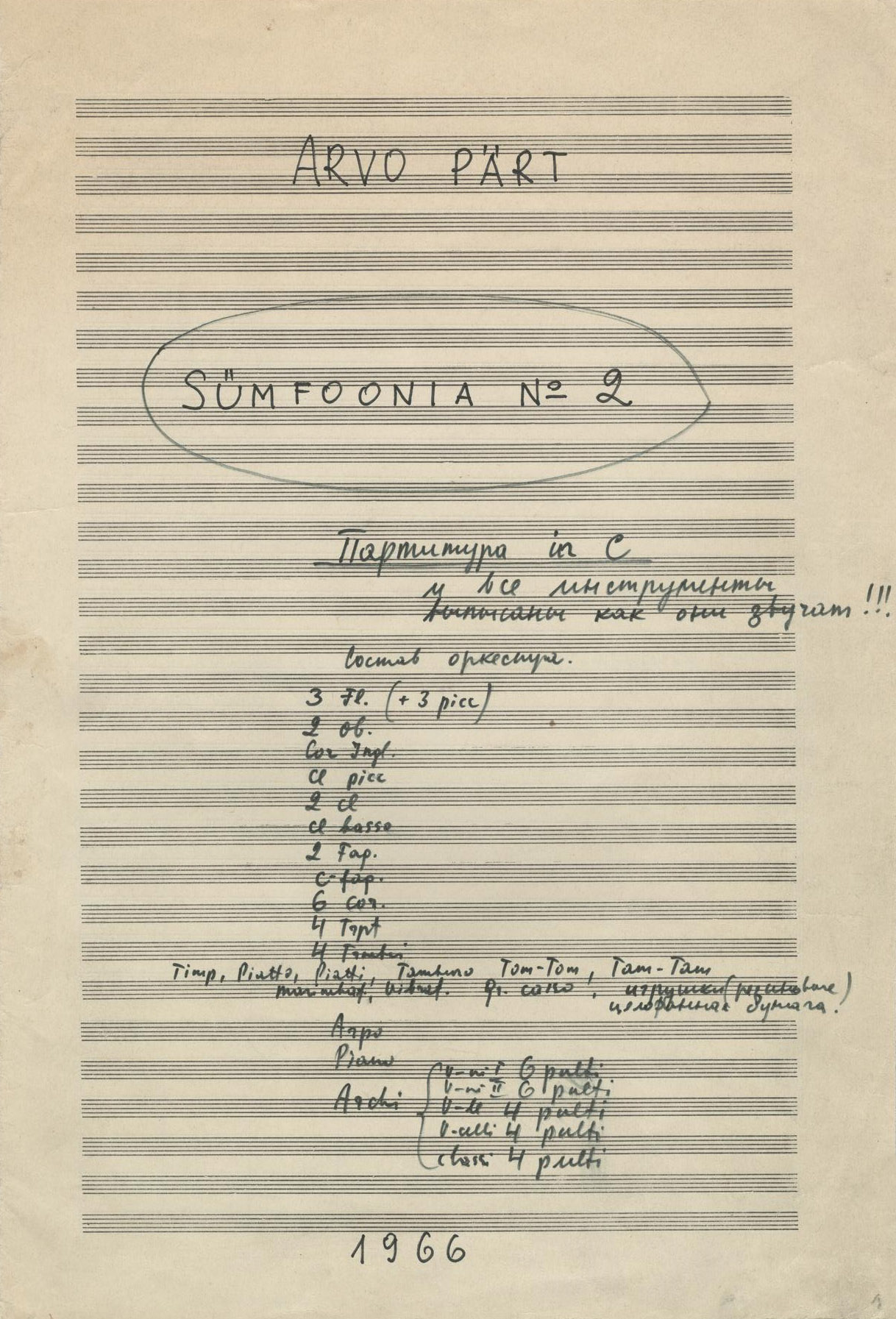While Arvo Pärt considered his Symphony No. 1 (completed in his student years in 1963) an unpretentious composition, he saw his Symphony No. 2 (1966) as a somewhat more complex work. This three-movement serialist composition is based on a highly structured note series F#-A-G-G#-B-C#-H-C-D-F-E♭-E consisting of three identical tetrachords based on the same intervals.
Common to Pärt’s work in the mid-1960s, the dodecaphonic principle is combined with elements of sonorism and sound mass music. In addition to unconventional instrumental sounds and clusters, Pärt includes several non-musical instruments in the orchestra, such as squeaky rubber toys and crackling cellophane paper.
In the last movement, Pärt uses collage technique to change the overall character of the work.…
While Arvo Pärt considered his Symphony No. 1 (completed in his student years in 1963) an unpretentious composition, he saw his Symphony No. 2 (1966) as a somewhat more complex work. This three-movement serialist composition is based on a highly structured note series F#-A-G-G#-B-C#-H-C-D-F-E♭-E consisting of three identical tetrachords based on the same intervals.
Common to Pärt’s work in the mid-1960s, the dodecaphonic principle is combined with elements of sonorism and sound mass music. In addition to unconventional instrumental sounds and clusters, Pärt includes several non-musical instruments in the orchestra, such as squeaky rubber toys and crackling cellophane paper.
In the last movement, Pärt uses collage technique to change the overall character of the work. Right before the Symphony ends, we can hear Pyotr Tchaikovsky’s Sweet Dream from his cycle of piano pieces, Children’s Album (1878), creating a harsh contrast between the earlier dissonant and anguish-filled music and the contrasting pure and simple melody. Nora Pärt has explained the meaning of the quote: “The Tchaikovsky quote is central to the work. Here childlike innocence and tenderness are juxtaposed with the cruelty of the outside world, and it is the tender side that comes out as the winner. If it is regarded just as a joke the whole work is ruined.” (Enzo Restagno, Arvo Pärt in Conversation, 2010, p. 19.)
Symphony No. 2 is reminiscent of the cello concerto Pro et contra composed in the same year. Similarities include its use of collage technique and its employment of both the twelve-tone and “sound-mass” techniques.
Symphony No. 2 was premiered in October 1967 in Tallinn by the Estonian National Symphony Orchestra conducted by Eri Klas.


